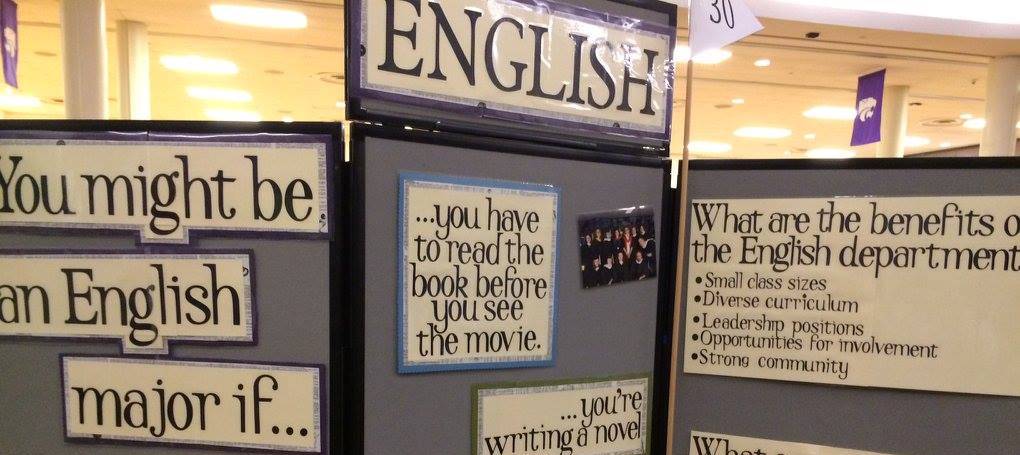
On Monday, October 8th, K-State’s Indigenous Faculty and Staff Alliance hosted its third annual Indigenous Peoples’ Day event.
Hundreds of folks, including tribal educators and professors from Nebraska, Oklahoma, Missouri, and Kansas, to students from our university and across the state came together to recognize that here in Manhattan, Kansas, we stand on Indigenous land and learn from the Indigenous knowledges that continue to emerge from and sustain Turtle Island.
For 2018, the keynote speakers included:
- Elizabeth Kronk Warner, J.D. (Sault Ste. Marie Tribe of Chippewa Indians),Professor of Law and Associate Dean of Academic Affairs, School of Law; Director, Tribal Law and Government Center; Affiliate Professor, Indigenous Studies, University of Kansas. Kronk gave a talk on current U.S. policy entitled “Raping Indian Country.”
- Robin Minthorn, Ph.D. (Kiowa Tribe of Oklahoma, Apache, Nez Perce, Umatilla and Assiniboine), Associate Professor, Educational Leadership and Native American Studies, University of New Mexico. Minthorn presented about Indigenous work in Education and Leadership in a talk entitled “Indigenizing the Academy and Reclaiming the Space of Our Ancestors.”
- Maggie Walter, Ph.D. (Palawa, descending from the Pairrebenne people of North Eastern Tasmania and a member of the larger Briggs Johnson Tasmanian Aboriginal family), Professor of Sociology and Pro Vice-Chancellor, Aboriginal Research and Leadership, University of Tasmania. An Oz to Oz Visiting Fulbright Scholar, Walter presented on the ways data itself can be recognized as coming from a dominant perspective and then subsequently decolonized in her presentation on “Indigenous Data and Indigenous Data Sovereignty.”
Other highlights included:
- A screening of the 2018 documentary Warrior Women
- A session by Kansas House of Representatives Member Ponka-We Victors (Ponca, Tohono O’odham) who discussed “Native Women’s Leadership”
- A session by Electa L. Hare-Red Corn (Pawnee and Inhanktowan descendant), Health Policy Research Scholar, University of Arkansas, and Kelsey Ducheneaux (Lakota Sioux), Youth Programs Coordinator and Natural Resource Director for the Intertribal Agriculture Council, who engaged issues of “Indigenous Food Sovereignty”
- A session by Robin Minthorn on “Indigenous Research Methodologies”
The events, which were often standing room only, brought people together to learn about and discuss some of the most important issues of the day.
As a settler scholar and ally from the English Department, which has supported the conference each year, I want to say how absolutely thrilled I am to see this event become what it has. It could not have happened without co-chairs LaVerne Bitsie Baldwin (Diné), Director of the Multicultural Engineering Program, and Alex Red Corn (Osage), Coordinator for Indigenous Partnerships, Assistant Professor of Educational Leadership, and Executive Director Kansas Association of Native American Education (KANAE).

What follows below are some thoughts from Alex about the planning and meaning of Indigenous Peoples’ Day.
— Lisa Tatonetti, Professor
The night before our 3rd Annual Indigenous Peoples’ Day conference at K-State was just like the previous two years. Through all of the planning, I had failed to make sure I was actually ready for the moments when I would be on stage. Specifically, I needed to prepare my introductory remarks for our theme — Indigenous Female Leadership: Disrupting Dominant Discourses — along with the introduction of one of our visiting scholars. When presenting in public, I can often throw up some bulleted points on a PowerPoint and BS my way through, but considering the fact that there would be several hundred people rolling through and we had a tight schedule, I had to attempt a level of professionalism with a degree of temporal efficiency…
I had to try to be a pro, and I had to represent.
Many of our visitors don’t have very many interactions with American Indians.
…including Real Pale Indians.
So I stayed up into the wee hours of the morning (#invisible labor) writing a handful of paragraphs for:
an introduction where I acknowledged my hetero-dude positionality, although not in such terms.
and introducing one of our visiting scholars in way that balances academic norms and c-v credentials with an Indigenous tone which attempted to prioritize the need for
acknowledgement…
of the work of those before us who made space for events like this.
After writing out my introductions, I was tired but couldn’t fall asleep. The knot in my stomach kept me awake…fear of failure, fear of chaos after so much planning. I laid wondering what surprises our 3rd Annual Indigenous Peoples’ Day would bring:
… embarrassment?
Lots of folks have put a lot of faith in us to pull this off.
When the next day came around, and hundreds of students, faculty, and staff came through the room, not all went perfectly as planned. However, I slowly learned what the day would bring… visibility.
Visibility for Indigenous women experiencing unparalleled rates of domestic violence.
Visibility for American Indian students attending Predominantly White Institutions.
Visibility of food sovereignty, Indigenous research methodologies, and state house leadership.
Visibility for Indigenous people in the world of big data.
Visibility of our ongoing perseverance and strength.
As our visiting Oz to Oz scholar Dr. Walter might ask — what makes us strong?
These events do.
Events that connect us with one another,
allow us to affirm our collective struggles and our solidarity in the face of
ongoing forces of colonialism, and assert our sovereignty through
visibility
within the very land-grant systems designed for our erasure,
upon the land that was stolen from us.
Visibility is affirmation that we are still here,
and if people are forced to acknowledge our ongoing presence,
we become human once again.
Real Indians, even pale ones.
As Dr. Walter suggested several times throughout her visit,
sometimes you have to disrupt their ontological foundation.
— Alex-Red-Corn (Osage)


